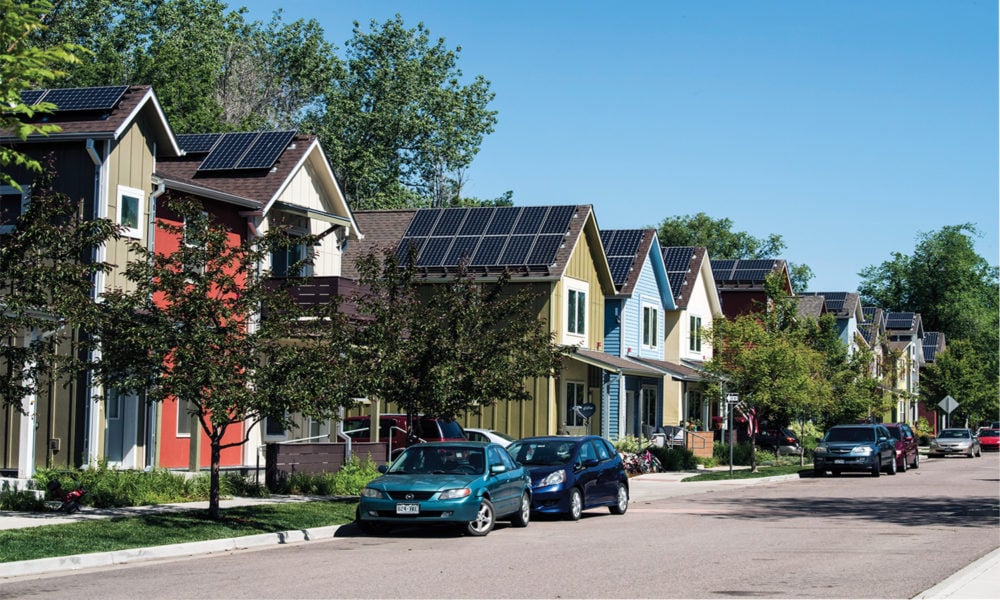The power grid has been designed, operated, and financially oriented around fossil fuels for decades. The legacy runs deep. Which makes a key topic in the energy transition “renewables integration,” or the technology, policy, and market changes needed to bring, and keep, ever higher levels of renewables online. One such switch? Fully valuing and mobilizing flexibility in electricity demand, the subject of a new issue brief from the Union of Concerned Scientists.
Modernizing the power grid lets us pivot from the fossil fuel-based relics of the past that have been holding the clean energy transition back and take advantage of the fact that renewables like wind and solar are different from fossil fuels. For one, renewables are clean. For two, they generate electricity virtually for free. And for three, they’re variable.
That’s right. I said it. Variable. Lean in close and I’ll give it to you straight: the sun sets. Every day.
With staggering frequency the fossil fuel industry tries to use this point as a gotcha!, as if clean energy advocates were feverishly working to somehow hide a fact like that. I promise, we’re not. Too heavy a lift, too long a con. (Though the very assertion does helpfully remind us just how heavy a lift and just how long a con they all appear comfortable undertaking.) But the variability of wind and solar is something, and to get the most out of renewables, we have to embrace a system that embraces that. The catch is: the entire financial model of current coal and natural gas plants depends on us not embracing it.
Here’s why.
By shifting flexible electricity end uses to times that best match the needs of a high-renewables power grid, flexible demand programs can lessen reliance on natural gas, resulting in cleaner and healthier air and lower costs. For a long while now, we’ve been squeezing more and more wind and solar into the existing system, progressively surpassing incumbents’ asserted points of grid collapse with nothing but steadily higher clean energy targets in sight.
But when renewables have to be fit into a system designed around fossil fuels, we’re not able to get as much out of them as we can, and worse, we’re forced to rely on coal and natural gas plants much more than we should.
Which means unnecessary pollution, unnecessary system costs, and a major drag on the rate of clean energy change.
Unsurprisingly, there’s a better, cleaner, lower-cost way.
This way flips the framing to take best advantage of renewable electricity whenever and wherever it’s produced. It’s carbon-free electricity! Generated at virtually zero-cost! Hard to understand how optimizing for these resources wouldn’t be a grid’s North Star. And yet, and yet: fossil fuel profits, they do shine bright.
Optimizing for renewables encompasses a whole array of approaches, like building out renewable resource diversity to take advantage of complementary resource profiles; strategically building out transmission lines to boost spatial and temporal diversity of resources and needs; advanced forecasting; allowing renewables to contribute to grid reliability services long handled by fossil fuels; and advancing energy storage technologies to provide a timing buffer.
And then there’s flexible demand. Or, taking advantage of latent flexibility in how and when we use electricity—from heating and cooling buildings to charging electric vehicles—to directly serve grid needs.
Flexible demand won’t solve it all, but it sure can solve some. Like, knocking out the need for whole power plants “some.” Saving customers millions of dollars a year “some.” Seriously curtailing the use of natural gas “some.” And beyond all that, easing the jobs of all the other renewables integration strategies along the way.
What’s more, we can start mobilizing flexible demand today, we just have to make it count. And that begins with recognizing it as the full resource it can be. Which brings it back around to our new issue brief. A source for understanding the basic whats, whys, and hows of flexible demand before launching off into the associated technology, policy, and market frontiers—of which there’s been tremendous emerging work in the field, and plenty more discussion planned for on this blog in the time to come.
To get started, though, here are five key points from the brief.
1. Flexible demand means making better use of our electricity use. In particular, shaping and shifting flexible electricity end uses to serve three primary grid applications: maximizing alignment of demand with renewable resource production; precluding the use of natural gas and avoiding unnecessary infrastructure upgrades; and providing the grid support services fossil fuel resources currently provide.
2. Flexible resources are everywhere, and more are coming soon. Here’s the premise of the thing: a number of ways in which we use electricity are flexible in the exact timing of electricity consumption, from briefly interruptible (e.g., AC cycling), to longer spans of flexibility (e.g., EV charged by morning commute), to a full timing lag enabled either through direct or indirect (e.g., tank water heater) battery use. Many energy end uses now targeted for electrification have the potential to be flexible, too.
3. Flexible demand programs can be very complex—but they don’t have to be. Approaches can vary widely. Technocrats thrill at one worldview of flexible demand, with real-time pricing articulated to the most granular level and every electricity end use optimized. Which can occur! But it need not. Significant opportunities exist at a much simpler level of engagement, just by tackling a few key end uses and/or skipping customer exposure to varying prices and subscribing specific loads in exchange for some form of compensation instead.
4. Hurdles to clear, carrots to dangle, sticks to prod. The first step to mobilizing flexible demand is to make sure utilities make it count, such as in their integrated resource plans. But while a critical step, it’s not the only step. Often, utility business models can be misaligned, and obstacles remain to full market participation, meaning getting to a place where demand is entirely (or even moderately) engaged will take thoughtful work.
5. For best results, know where you are, and know where you’re going. Proceed carefully, intentionally, and with eyes to the horizon—things are changing, and fast. Not all programs will look the same, as geography can play a big role in the types of grid flexibility required due to differences in renewable resource mix, attendant patterns of supply, local condition of the grid, and the types and shapes of flexible resources available—including flexible loads. All programs, though, should be considerate of equity and accessibility, to ensure beneficial opportunities are widespread, ratepayer protections are robust, and that there’s full sharing of grid-wide benefits accrued.
Again this year, more renewables are projected to come online than fossil fuels. Looking ahead, we don’t just need to stick to that trend—we need to throttle it. And we need a grid prepared for that. We need a grid that takes advantage of that. We need a grid that stops centering fossil fuels and starts centering renewables instead, embracing the many tools—like flexible demand—that will help it on its way.

